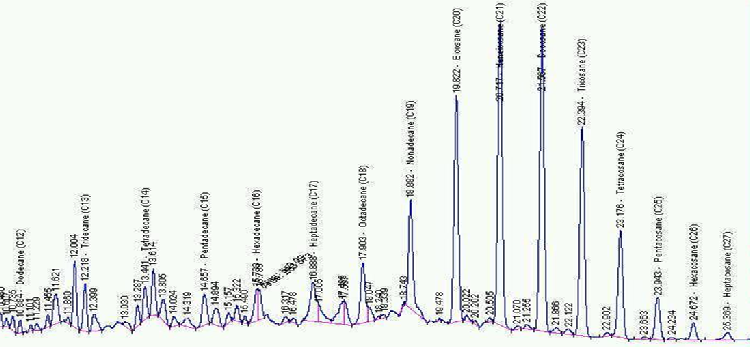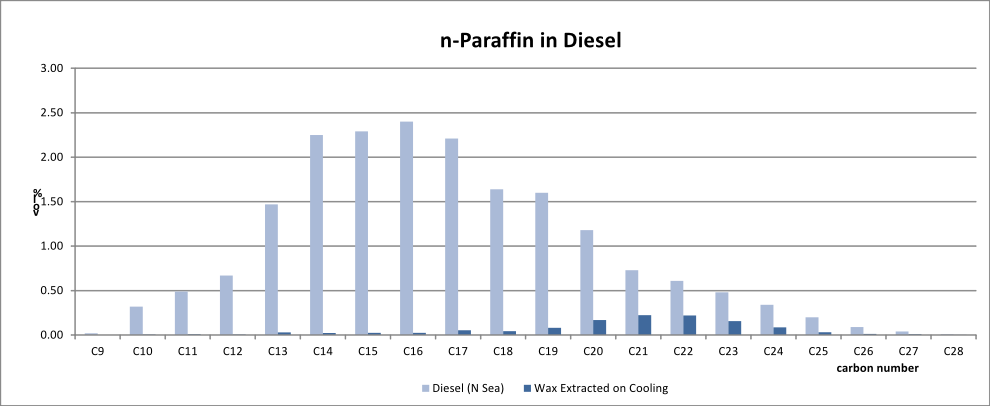N-PARAFFIN WAX CRYSTALLISATION
Request file: n-Paraffin.xlsm

The GC trace above identifies the carbon number range for n-paraffin wax separated as it crystallises out of a typical diesel fuel between the cloud point and CFPP target. This fuel based on a North Sea feed, contained 19% n-paraffin and less than 1% of wax is formed from the higher carbon number n-paraffins. The graph below compares the extracted wax with the n-paraffin range of the diesel and is typical of many European fuels blended to the EN-590 specification.

The amount of wax crystallising from fuels can be measured directly by Differential Scanning Calorimetry and can also be reliably correlated from the n-paraffin distribution. This correlation can be used in the production planning process to check if proposed blends are feasible for the Cold Flow specifications.
The Excel calculation file, n-Paraffin.xlsm , is set-up with the correlation for wax crystallisation from the n-paraffin distribution. GC analysis of diesel is not usually available in a refinery and a routine is added to make an approximation of the n-paraffin distribution from the distillation range and cloud point of a component.